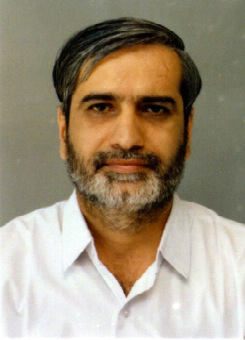 India has provided zero-tariff export facilities to Bangladesh for 47 products, of which 46 are garments products. Among them 24 are knitwear products, 21 woven garment items and one silk fabric item. Shirts, trousers, blouses, children wear, nightwear, T-shirts and jeans are on the list. Garment items – made of imported or local fabrics – will qualify for duty-free market access to India but the exporters must add at least 30% value to the manufacture of the apparel item inside the country to get duty benefits. The key point of India’s latest offer is it does not have any strings or quotas attached.Of the total garment exports from Bangladesh, 56% go to the European markets, 25% to the USA and 5% to Canada and the remainder to the rest of the world. The export volume of garment products from Bangladesh to India is very meager. In fiscal 2010-11, Bangladesh exported woven and knit garment items worth $80 million. A large number of Bangladeshi apparel products are being sold in Indian markets through giant international buyers. If those can be sold directly to the Indian market, then both delivery time and cost can be saved. The Indian buyers will also get similar benefit from this deal position as they will be able to get these products at low price by spending less time. It is expected that India’s trade with Bangladesh will also increase as India exports substantial amount of raw material required for value addition to Bangladesh’s garment industry. Under the new EU rules of origin effective from January this year, clothing exporters from Bangladesh can now enjoy duty-free access to 27-nation EU — the world’s largest apparel market – even if they source fabrics from other countries. In view of this imports of fabrics, the basic raw-materials of export-oriented ready-made garments (RMG) have jumped many fold and reached at a dangerous level, according to the domestic fabric makers. During the first six months of the year Bangladeshi RMG exporters imported fabrics worth over 730 million taka ($10 million) from China alone, up from 130 million taka ($2.0 million) during the same period last year. Bangladesh’s RMG exporters import fabrics from different sources mainly from China, India, Pakistan and Turkey.
India has provided zero-tariff export facilities to Bangladesh for 47 products, of which 46 are garments products. Among them 24 are knitwear products, 21 woven garment items and one silk fabric item. Shirts, trousers, blouses, children wear, nightwear, T-shirts and jeans are on the list. Garment items – made of imported or local fabrics – will qualify for duty-free market access to India but the exporters must add at least 30% value to the manufacture of the apparel item inside the country to get duty benefits. The key point of India’s latest offer is it does not have any strings or quotas attached.Of the total garment exports from Bangladesh, 56% go to the European markets, 25% to the USA and 5% to Canada and the remainder to the rest of the world. The export volume of garment products from Bangladesh to India is very meager. In fiscal 2010-11, Bangladesh exported woven and knit garment items worth $80 million. A large number of Bangladeshi apparel products are being sold in Indian markets through giant international buyers. If those can be sold directly to the Indian market, then both delivery time and cost can be saved. The Indian buyers will also get similar benefit from this deal position as they will be able to get these products at low price by spending less time. It is expected that India’s trade with Bangladesh will also increase as India exports substantial amount of raw material required for value addition to Bangladesh’s garment industry. Under the new EU rules of origin effective from January this year, clothing exporters from Bangladesh can now enjoy duty-free access to 27-nation EU — the world’s largest apparel market – even if they source fabrics from other countries. In view of this imports of fabrics, the basic raw-materials of export-oriented ready-made garments (RMG) have jumped many fold and reached at a dangerous level, according to the domestic fabric makers. During the first six months of the year Bangladeshi RMG exporters imported fabrics worth over 730 million taka ($10 million) from China alone, up from 130 million taka ($2.0 million) during the same period last year. Bangladesh’s RMG exporters import fabrics from different sources mainly from China, India, Pakistan and Turkey.
Bangladesh’s growth rate is 18 percent, while India’s is only 10-12 percent. Bangladesh’s garment exports are also much higher in volume than India’s, and on top of that, Bangladesh has a 20 percent cost advantage over India. However, there are many economists who feel that with a trade deficit of almost 5 billion USD over Bangladesh, the deal of a duty free access of 46 garment items won’t bring in any big impact on India’s garment industry to be worried off. But from Bangladesh’s point of view it is a positive move and it should have been ensured much earlier as a neighbouring country. It will pave the way for India becoming Bangladesh’s third largest garment export destination after the US and the EU. Bangladesh is going to again submit its proposal to the WTO – during the 8th WTO ministerial in Geneva this month – for a duty- and quota-free access of its garment products to the US market.
A number of manufacturers and retailers from India are exploring the market opportunities in Bangladesh as it is a cheaper place to manufacture apparel and textile products. The major textiles manufacturers like Globus, Reliance, Arvind Mills and Madura Fashions & Lifestyles are reported to be looking to set up firms in Bangladesh. Manufacturers are not expected to cut their production in India, but, will set up a base to manufacture basic textile items in Bangladesh. This is because they believe that India is good at producing value added textile products. However, many Indian industry players feel that zero duty entry for Bangladeshi garments is indirectly offering Chinese fabrics duty-free access into the country.





